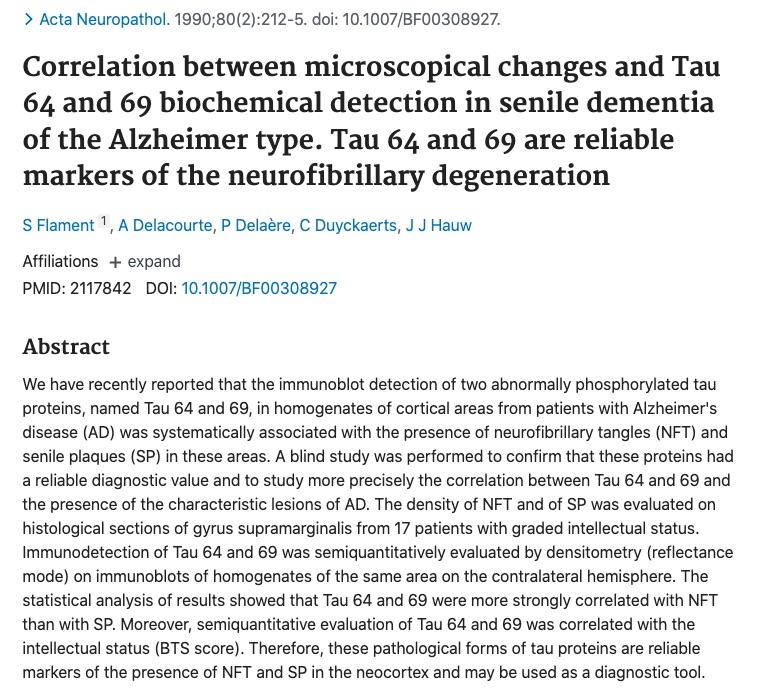Acta Neuropathol
. 1990;80(2):212-5. doi: 10.1007/BF00308927.
Correlation between microscopical changes and Tau 64 and 69 biochemical detection in senile dementia of the Alzheimer type. Tau 64 and 69 are reliable markers of the neurofibrillary degeneration
S Flament 1, A Delacourte, P Delaère, C Duyckaerts, J J Hauw
Affiliations expand
PMID: 2117842
DOI: 10.1007/BF00308927
Abstract
We have recently reported that the immunoblot detection of two abnormally phosphorylated tau proteins, named Tau 64 and 69, in homogenates of cortical areas from patients with Alzheimer's disease (AD) was systematically associated with the presence of neurofibrillary tangles (NFT) and senile plaques (SP) in these areas. A blind study was performed to confirm that these proteins had a reliable diagnostic value and to study more precisely the correlation between Tau 64 and 69 and the presence of the characteristic lesions of AD. The density of NFT and of SP was evaluated on histological sections of gyrus supramarginalis from 17 patients with graded intellectual status. Immunodetection of Tau 64 and 69 was semiquantitatively evaluated by densitometry (reflectance mode) on immunoblots of homogenates of the same area on the contralateral hemisphere. The statistical analysis of results showed that Tau 64 and 69 were more strongly correlated with NFT than with SP. Moreover, semiquantitative evaluation of Tau 64 and 69 was correlated with the intellectual status (BTS score). Therefore, these pathological forms of tau proteins are reliable markers of the presence of NFT and SP in the neocortex and may be used as a diagnostic tool.
